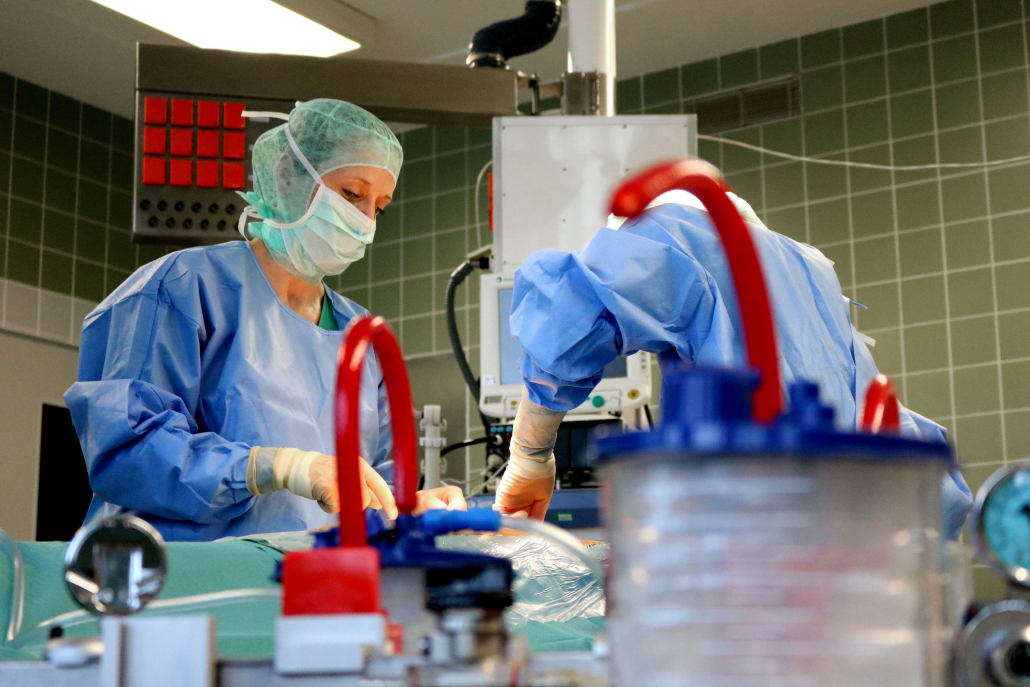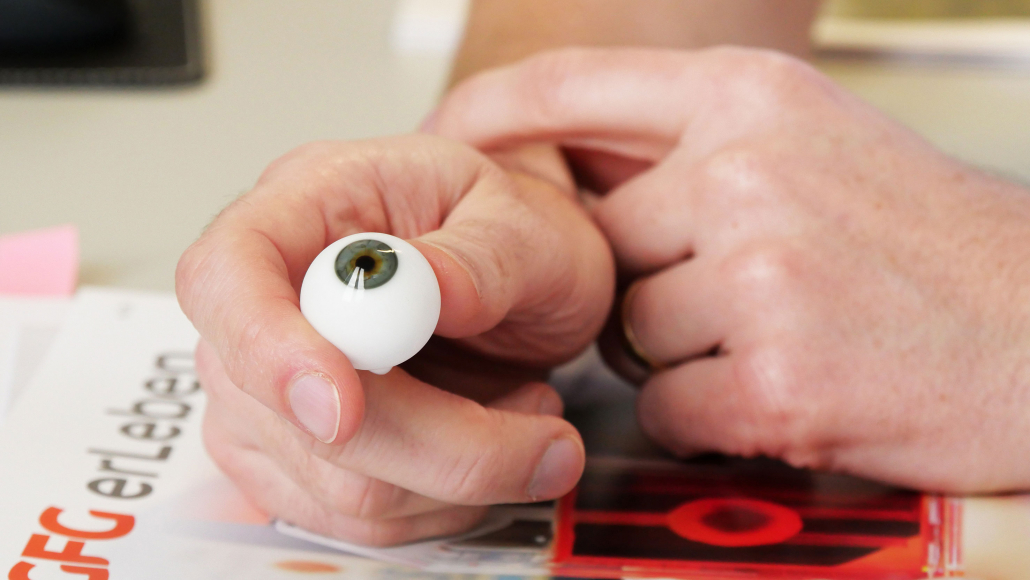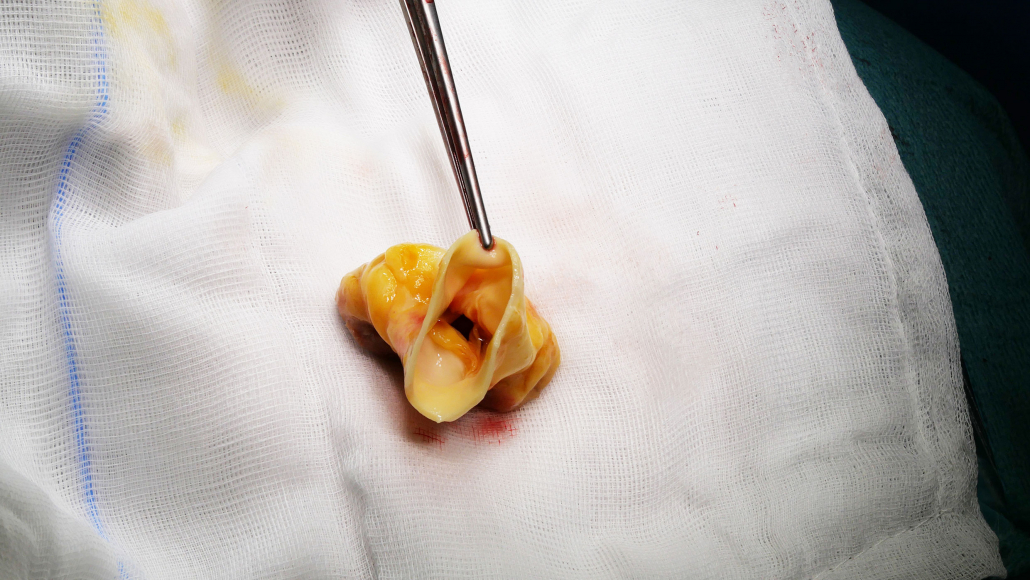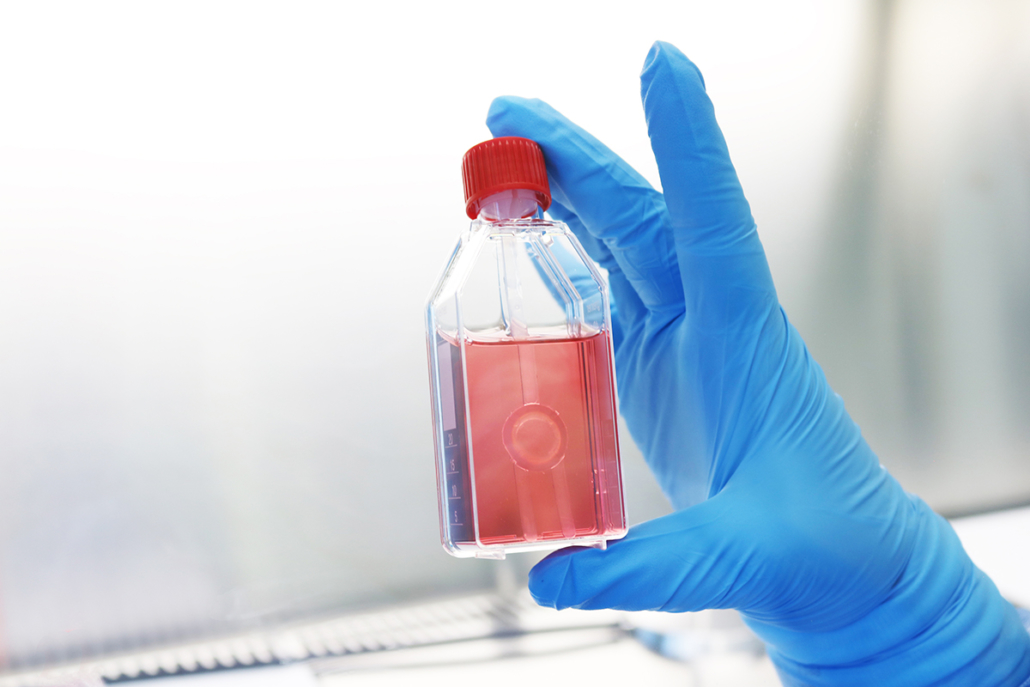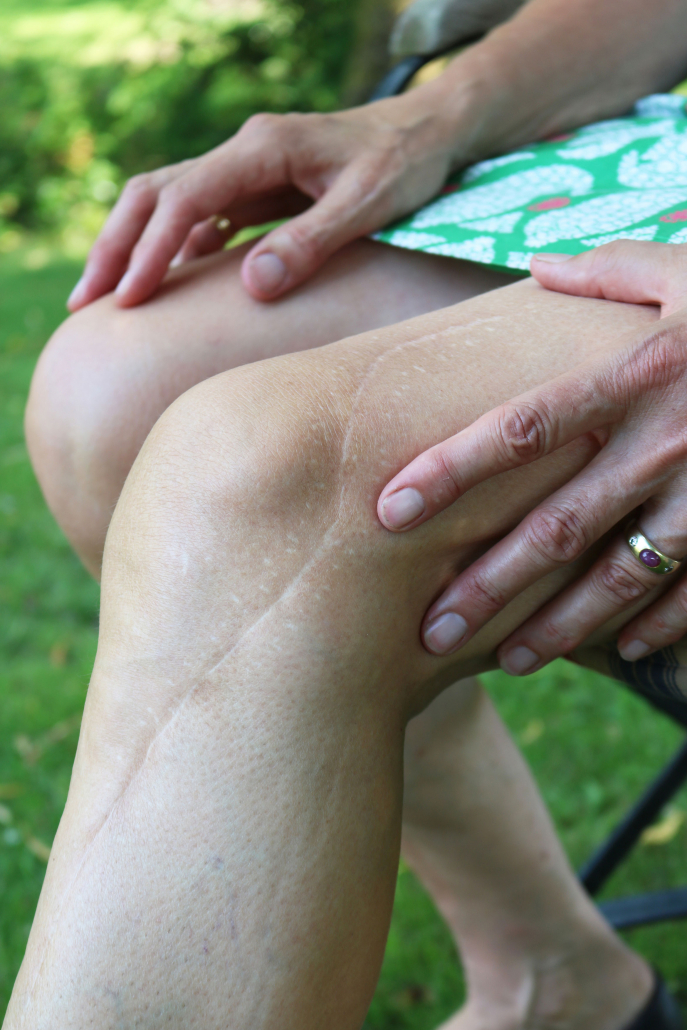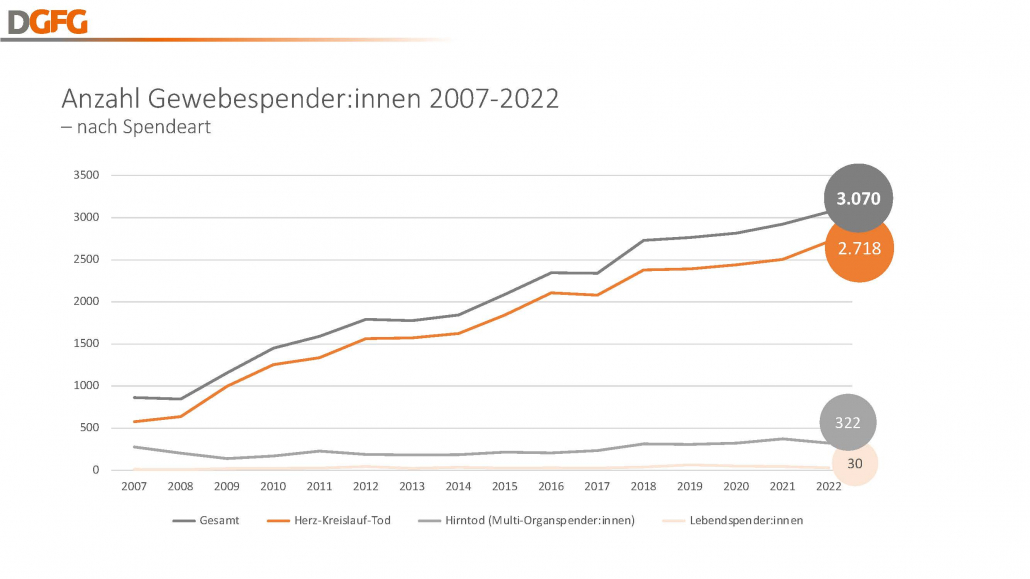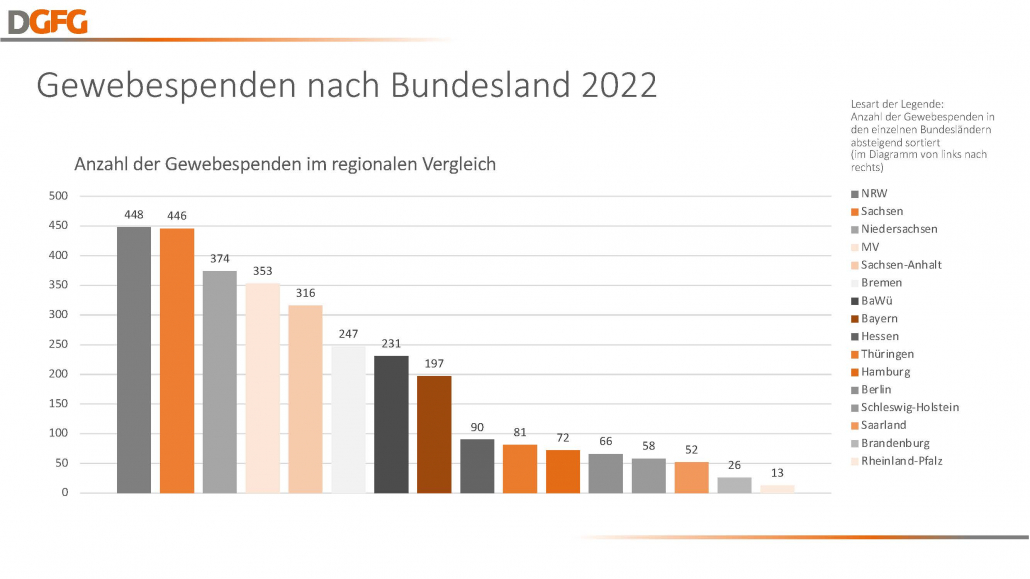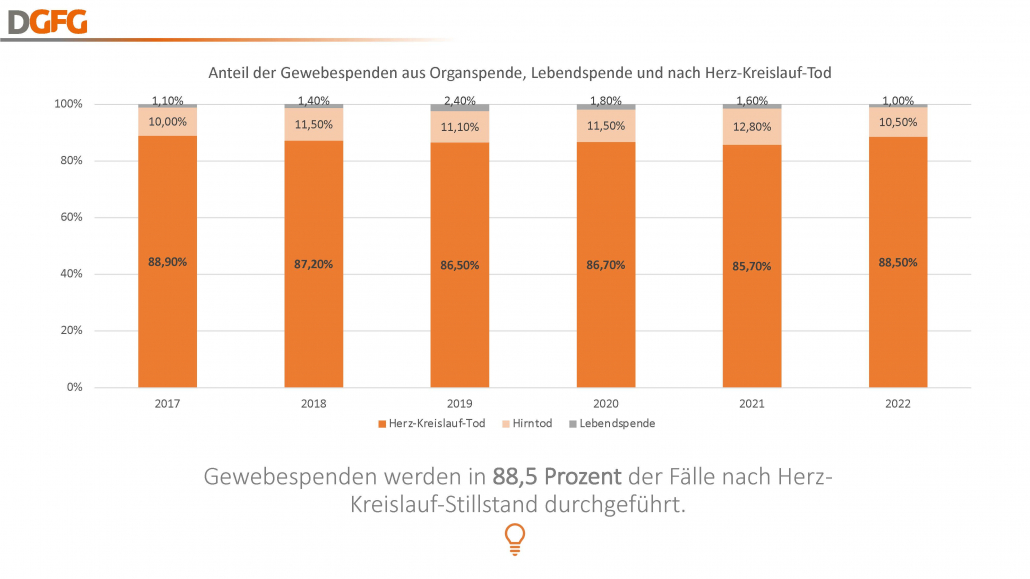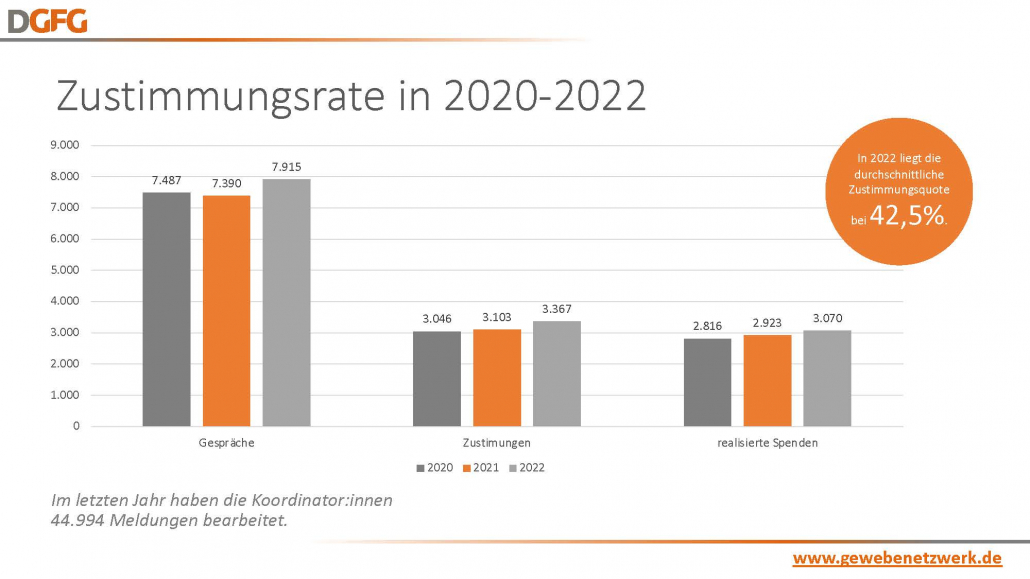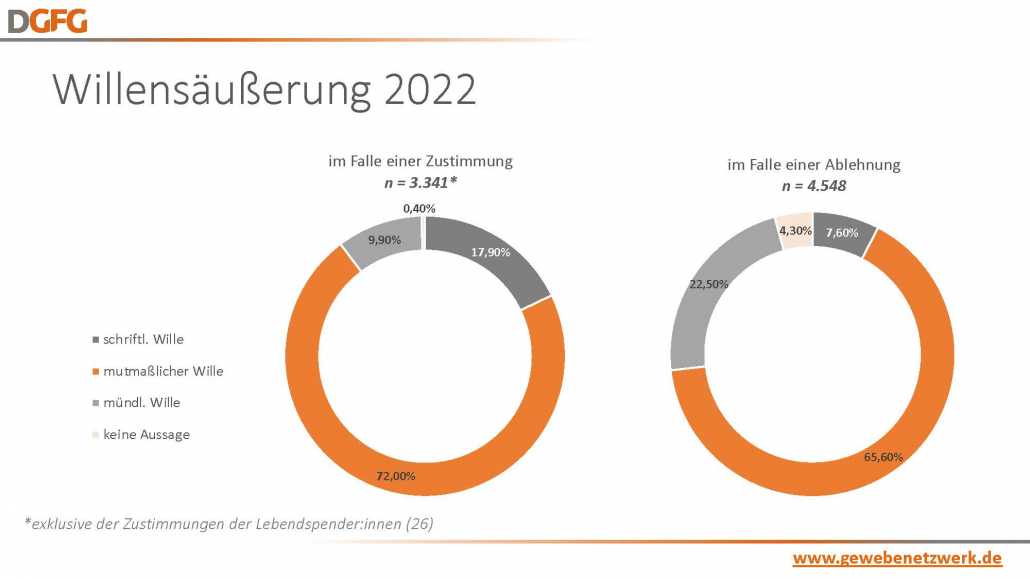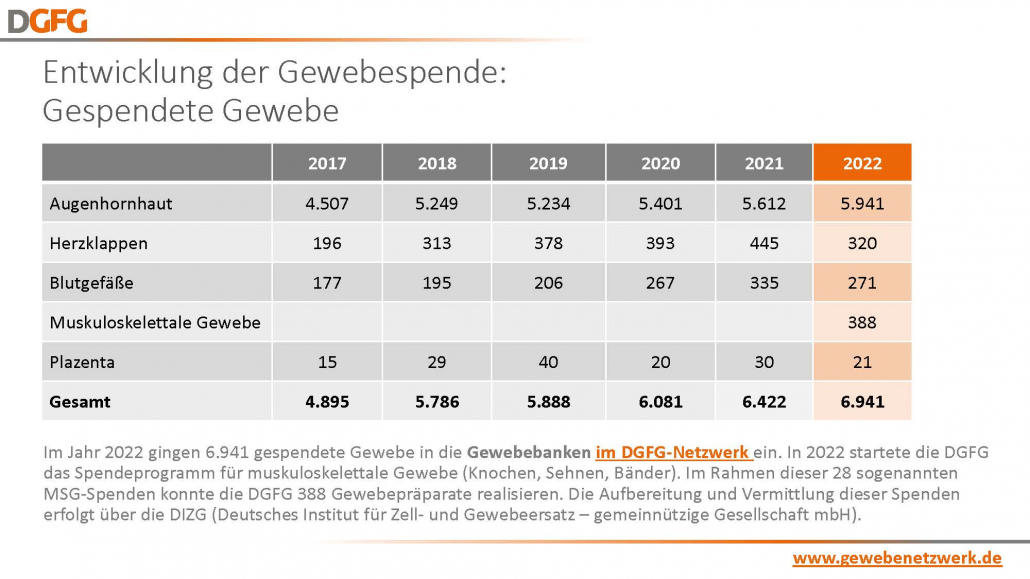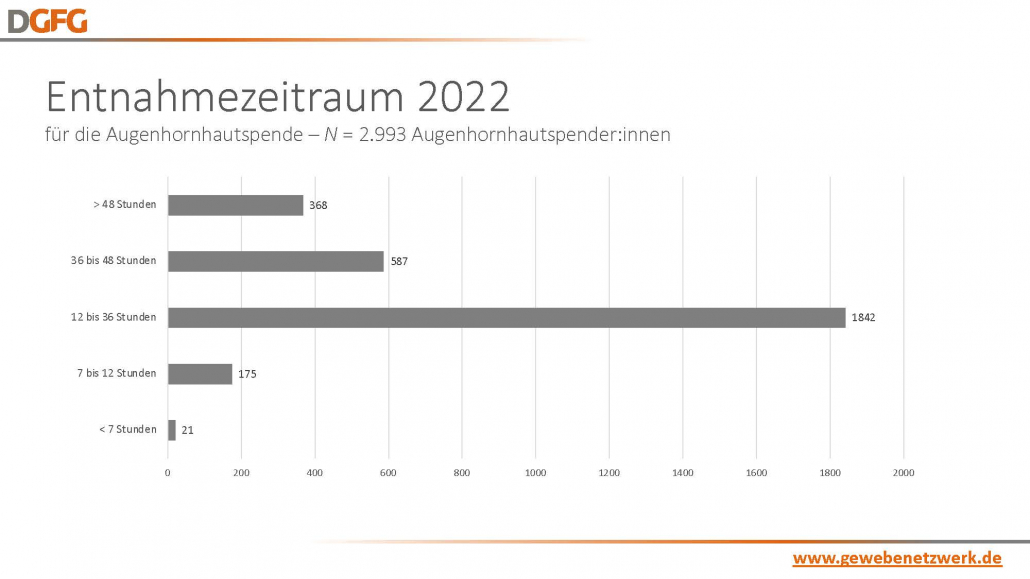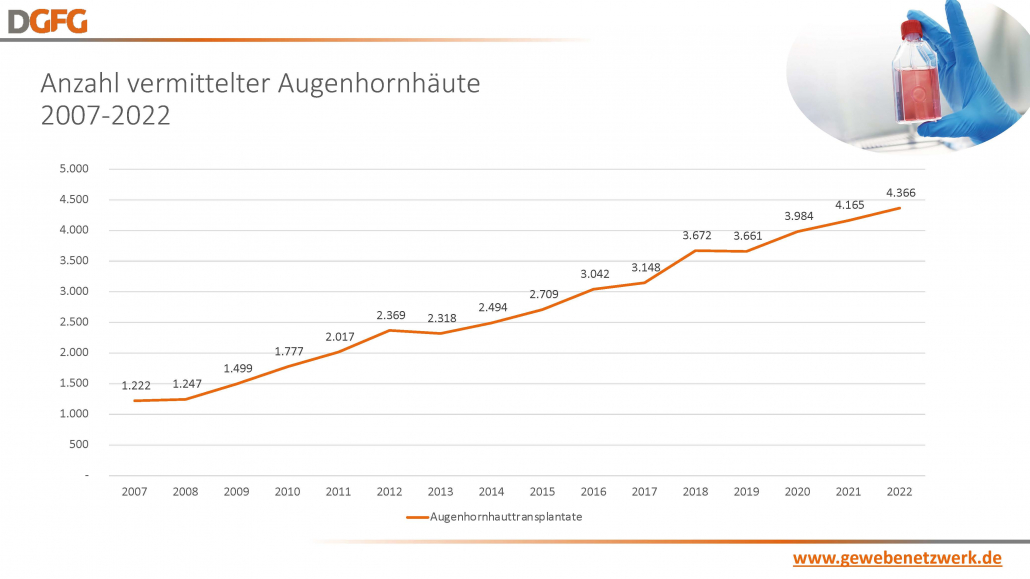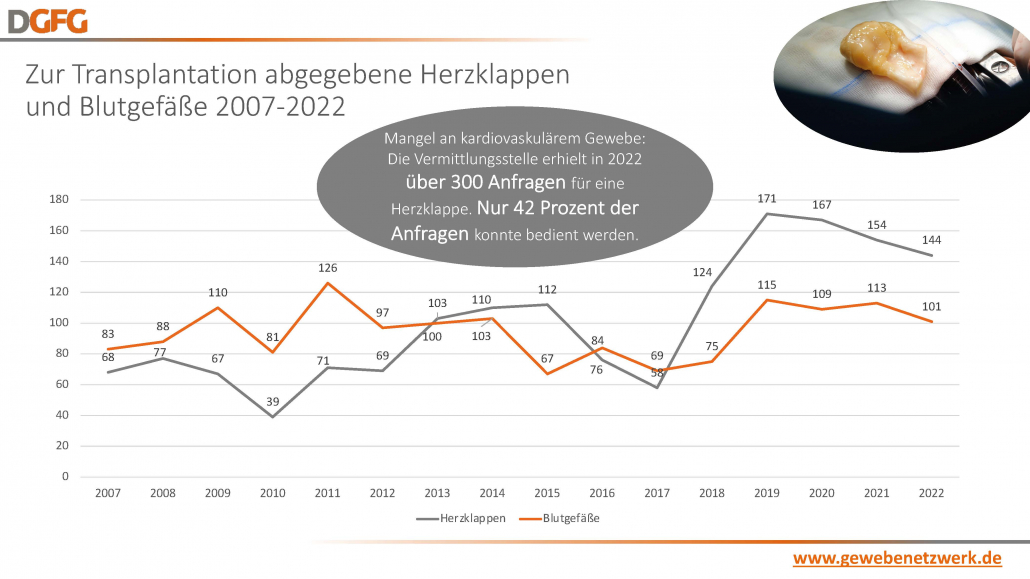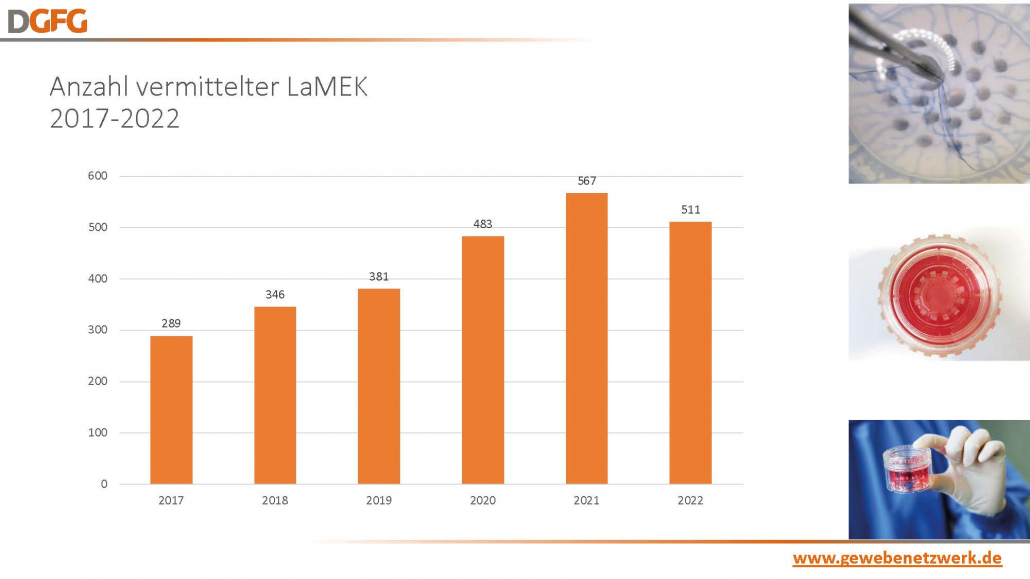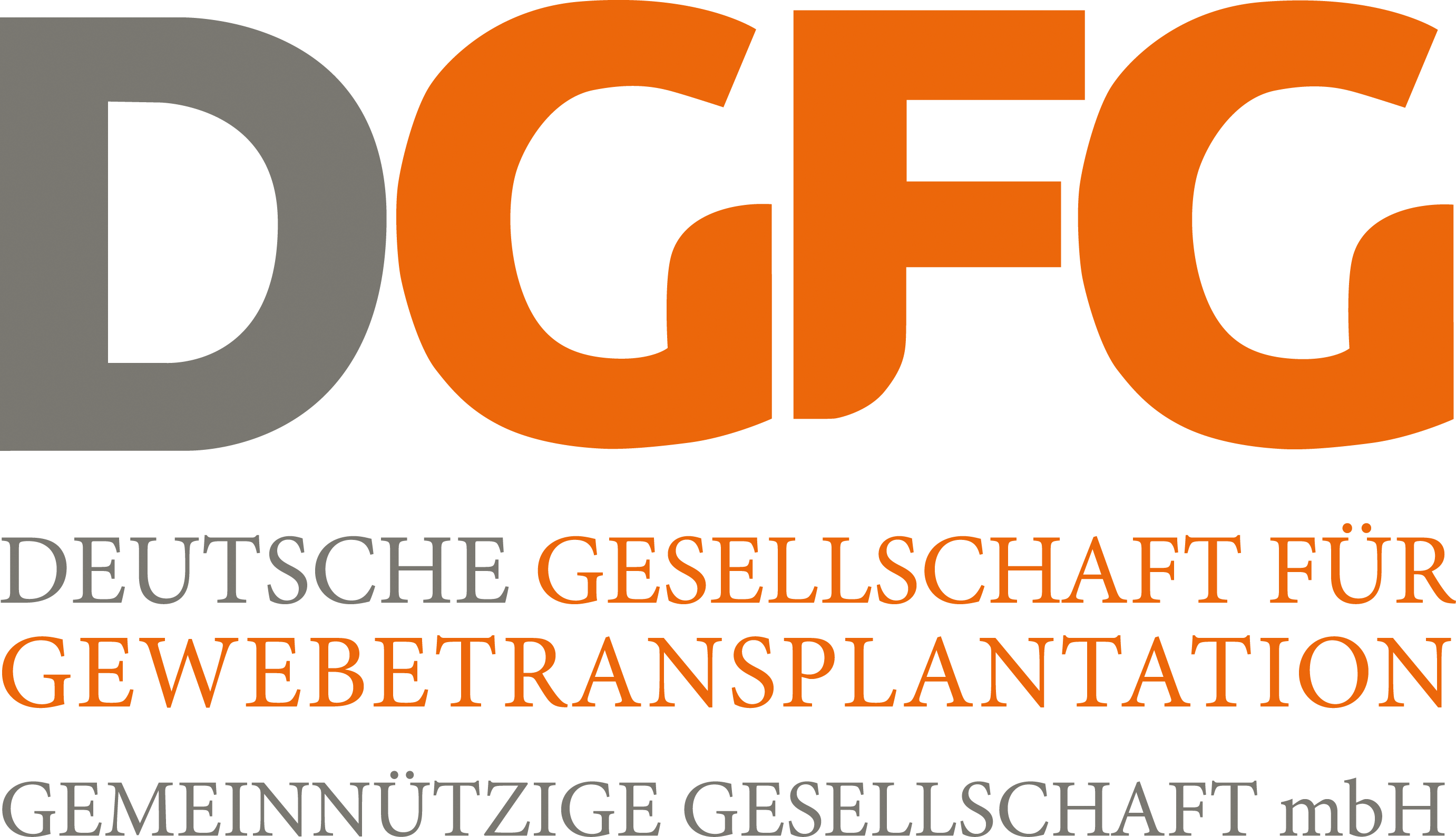Tissue donation figures 2022
Shortage of heart valves ever greater
Hanover, January 1, 2023 – 3,070 people donated tissue in 2022 – a new record. Compared to the previous year, the German Society for Tissue Transplantation (DGFG) was again able to increase tissue donation: 53 tissue donation coordinators processed almost 45,000 donor reports, conducted 7,915 next of kin interviews and received 3,367 consents. 42.5 percent of all donors and their relatives agreed to donate tissue. With 448 tissue donations, North Rhine-Westphalia is the German state with the highest number of donations in 2022, closely followed by Saxony with 446 tissue donations. In total, 7,111 patients received a tissue transplant from the DGFG network. Despite this positive development, the DGFG is concerned about the future. Because what is missing are life-saving heart valves. While the DGFG was able to expand the donation of corneas, the non-profit organization had to accept a sharp decline in the donation of heart valves. The reason for this is in particular the decline in organ donation, from which the majority of heart valves are still obtained. In addition, the Act to Strengthen Decision-Making in Organ Donation, which came into force in March 2022, poses a considerable threat to patient care. The restrictions on access to the planned registry stipulated therein[1] will hinder the donation process and lead to a significant collapse in donation numbers if nothing more is changed in the law reform by the time the registry is launched.
DGFG criticizes law reform and warns of fatal consequences for patient tissue care
“The law to strengthen decision-making in organ donation, which comes into force in March 2022, will lead to a disruption of our work in tissue donation in this form. For each individual case, we would have to rely on information from the registry, which can only be accessed via authorized hospital employees with an electronic health professional card. With around 45,000 cases per year that we process at the DGFG and limited time and personnel resources on the clinic side, this cannot work. With this extreme organizational effort to retrieve possible decision documentation, we cannot meet the time windows in tissue donation,” states Martin Börgel, DGFG executive director. “This legislative reform makes it clear that on the political side there is a complete ignorance of the processes in tissue donation. We are still struggling with a shortage in tissue donation, especially of heart valves. The DGFG network handles half of the patient care with tissue transplants. For this to continue, urgent action is needed.”
More corneas – fewer heart valves
Also in the third pandemic year, the DGFG succeeded in further expanding tissue donation: 7,111 tissue transplants were successfully allocated by the DGFG, including 4,366 corneal transplants. The cornea remains the most donated tissue with 83.5 percent. In addition to the donation of corneas, heart valves, blood vessels and amniotic membranes, the DGFG also dedicated itself to the donation of bones, tendons and ligaments (musculoskeletal tissue = MSG) in 2022. Within the scope of these 28 MSG donations, 388 musculoskeletal tissues could be obtained. The supply of heart valves showed a different picture: DGFG was only able to arrange 144 heart valves for transplantation in 2022, ten fewer than in the previous year. “With more than 300 requests for a heart valve, this is significantly too few, considering that the life expectancy of the patients must suffer. Young patients in particular are dependent on humane heart valves that can grow with them and do not require blood-thinning medication. We must work together with the hospitals to expand heart valve donation after cardiovascular death in order to have a reliable alternative to organ donation,” says Börgel.
Majority of heart valves come from organ donation
Organ donation continues to be important for patient care, especially with cardiovascular tissue (KVG), i.e. heart valves and blood vessels: A total of 322 tissue donations came from organ donors (10.5%). In 55 percent of these tissue donations, the heart could be collected for recovery of the still-functioning heart valves and vessels. Since, in contrast to organ donation, tissue donation is not tied to brain death diagnosis, the DGFG has been promoting the KVG donation program for cardiovascular decedents, which is independent of organ donation, for several years. The donation of heart valves and vessels is possible up to 36 hours, cornea donation even up to 72 hours after death. “We do not have the situation in tissue donation that a heart valve has to be implanted just like a heart within four hours of collection from patients. We have up to 36 hours to remove the heart and take it to a tissue bank for processing. Medical screening, educational interviews and removals are performed by our own staff. From the clinics, we require not only prompt donor notification and speedy transfer of the deceased to refrigeration, but also a removal room. More support is needed here from the hospitals,” says Börgel.
More and more physicians are turning to an alternative to amniotic membrane transplantation
As an alternative to conventional amniotic membrane transplantation, in which the thin egg membrane from the maternal placenta is sutured onto the ocular surface, more and more ophthalmologists are turning to the AmnioClip-plus (AC+). The DGFG was able to arrange 140 of these clips in 2022, about 60 more than in the previous year. The AC+ is an innovation from the DGFG network. It can be placed on the diseased or injured eye similar to a contact lens. The advantage is that the amniotic membrane is clamped in a ring system and can be removed again once success has been achieved. There is no need for an additional suture, which ensures a better healing process for the patient. The amniotic membrane is obtained in the course of placenta donation, a living tissue donation in the case of a planned caesarean section. In 2022, the DGFG was able to realize 21 placenta donations.
About the German Society for Tissue Transplantation (DGFG)
The DGFG has been promoting tissue donation and transplantation in Germany since 1997. Based on the Tissue Act of 2007, all activities and processes of tissue donation are regulated by law. All tissue preparations are subject to a ban on trade. The DGFG arranges its transplants via a central allocation office with a nationwide waiting list. Every medical institution can obtain tissue from the DGFG. As an independent, non-profit organization, the DGFG is supported exclusively by public health care institutions: its shareholders are the University Hospital Carl Gustav Carus Dresden, the University Hospital Leipzig, the Hannover Medical School, the Rostock University Medical Center and the Dietrich Bonhoeffer Clinic Neubrandenburg. The DGFG is unique in Germany in its organizational structure, the voluntary nature of its support by the network partners and its independence from private or commercial interests.

Kristin Kleinhoff, M.A.
+49 511 563 559 34
+49 151 414 000 51

